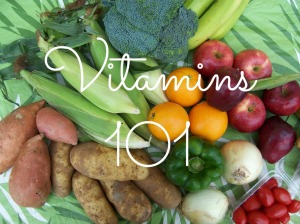
Wow! I’m learning a lot while studying the various vitamins. Today I want to talk about Vitamin A.
Did you know there are two forms of Vitamin A? There is Vitamin A itself and it’s precursor, beta-carotene. I didn’t know beta-carotene was a “precursor” to Vitamin A. I guess when I heard the word I thought it was synonymous with Vitamin A. They are two different things though. Vitamin A is only found in animal sources and beta-carotene comes from plants. The good news though if you are vegetarian is that most people have no trouble converting beta-carotene into Vitamin A. They do, however, need to make sure that they are getting Vitamins B12 and C, zinc, and protein to make this conversion happen.
So what does Vitamin A do for us? Vitamin A helps to renew our skin and mucous membranes. It also helps to repair the linings in our digestive and respiratory tracts. Our immune and respiratory systems need Vitamin A in order to function correctly. And, of course, we all know that Vitamin A is important to our vision, but did you also know that it is good for our bones, teeth and blood?
So how can we get Vitamin A into our diet? According to www.healthaliciousness.com here are the top ten sources: liver, paprika/red pepper/cayenne/chili powders, sweet potatoes, carrots, dark leafy greens, butternut squash, dried herbs, dark and colourful lettuces, dried apricot and cantaloupe. Other foods considered rich in Vitamin A are: papaya, mangoes, green peas, tomatoes, peaches, sweet red peppers, fortified skim milk, whole milk and fortified oatmeal. With a list like that it should be easy to work Vitamin A into your diet!

The information about Vitamin A comes from the Encyclopedia of Natural Healing, Alive Publishing Group, 1997.

No comments:
Post a Comment